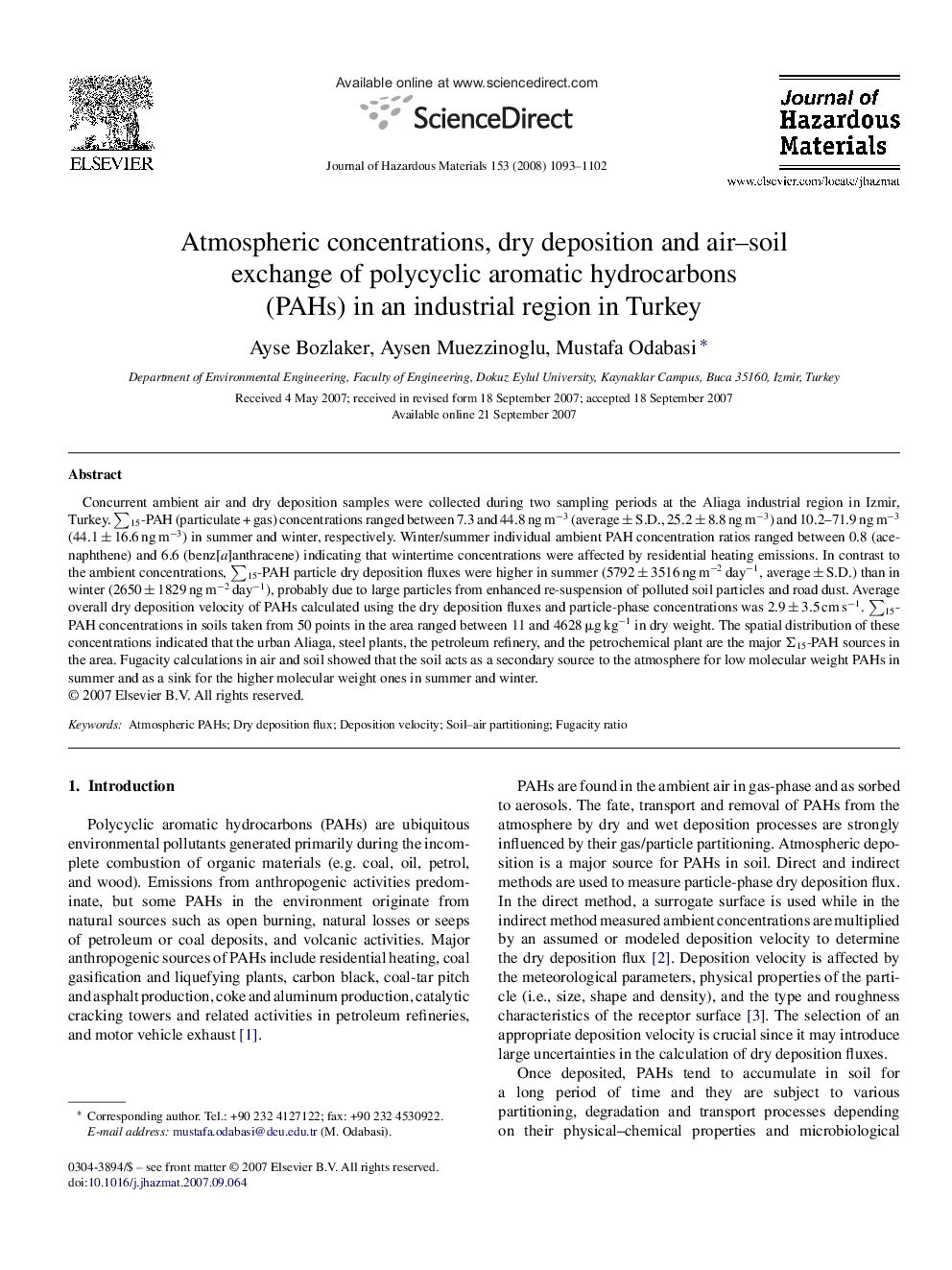| Article ID | Journal | Published Year | Pages | File Type |
|---|---|---|---|---|
| 583045 | Journal of Hazardous Materials | 2008 | 10 Pages |
Abstract
Concurrent ambient air and dry deposition samples were collected during two sampling periods at the Aliaga industrial region in Izmir, Turkey. â15-PAH (particulate + gas) concentrations ranged between 7.3 and 44.8 ng mâ3 (average ± S.D., 25.2 ± 8.8 ng mâ3) and 10.2-71.9 ng mâ3 (44.1 ± 16.6 ng mâ3) in summer and winter, respectively. Winter/summer individual ambient PAH concentration ratios ranged between 0.8 (acenaphthene) and 6.6 (benz[a]anthracene) indicating that wintertime concentrations were affected by residential heating emissions. In contrast to the ambient concentrations, â15-PAH particle dry deposition fluxes were higher in summer (5792 ± 3516 ng mâ2 dayâ1, average ± S.D.) than in winter (2650 ± 1829 ng mâ2 dayâ1), probably due to large particles from enhanced re-suspension of polluted soil particles and road dust. Average overall dry deposition velocity of PAHs calculated using the dry deposition fluxes and particle-phase concentrations was 2.9 ± 3.5 cm sâ1. â15-PAH concentrations in soils taken from 50 points in the area ranged between 11 and 4628 μg kgâ1 in dry weight. The spatial distribution of these concentrations indicated that the urban Aliaga, steel plants, the petroleum refinery, and the petrochemical plant are the major Σ15-PAH sources in the area. Fugacity calculations in air and soil showed that the soil acts as a secondary source to the atmosphere for low molecular weight PAHs in summer and as a sink for the higher molecular weight ones in summer and winter.
Related Topics
Physical Sciences and Engineering
Chemical Engineering
Chemical Health and Safety
Authors
Ayse Bozlaker, Aysen Muezzinoglu, Mustafa Odabasi,
